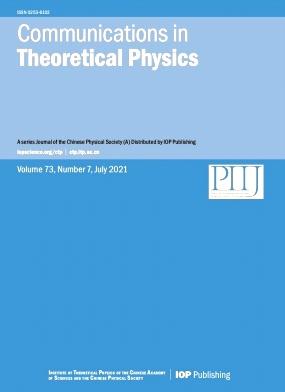Learning topological defects formation with neural networks in a quantum phase transition
IF 2.9
3区 物理与天体物理
Q2 PHYSICS, MULTIDISCIPLINARY
引用次数: 0
Abstract
Neural networks possess formidable representational power, rendering them invaluable in solving complex quantum many-body systems. While they excel at analyzing static solutions, nonequilibrium processes, including critical dynamics during a quantum phase transition, pose a greater challenge for neural networks. To address this, we utilize neural networks and machine learning algorithms to investigate time evolutions, universal statistics, and correlations of topological defects in a one-dimensional transverse-field quantum Ising model. Specifically, our analysis involves computing the energy of the system during a quantum phase transition following a linear quench of the transverse magnetic field strength. The excitation energies satisfy a power-law relation to the quench rate, indicating a proportional relationship between the excitation energy and the kink numbers. Moreover, we establish a universal power-law relationship between the first three cumulants of the kink numbers and the quench rate, indicating a binomial distribution of the kinks. Finally, the normalized kink-kink correlations are also investigated and it is found that the numerical values are consistent with the analytic formula.用神经网络学习量子相变中拓扑缺陷的形成
神经网络具有强大的表征能力,因此在求解复杂的量子多体系统时非常有用。虽然神经网络擅长分析静态解,但非平衡过程,包括量子相变过程中的临界动力学,对神经网络提出了更大的挑战。为了解决这个问题,我们利用神经网络和机器学习算法来研究一维横向场量子伊辛模型中拓扑缺陷的时间演化、通用统计和相关性。具体来说,我们的分析涉及计算横向磁场强度线性淬火后量子相变过程中系统的能量。激发能量与淬火速率之间存在幂律关系,表明激发能量与扭结数之间存在比例关系。此外,我们还在扭结数的前三个累积数与淬火速率之间建立了普遍的幂律关系,表明扭结数呈二项分布。最后,我们还研究了归一化的扭结-扭结相关性,发现数值与解析公式一致。
本文章由计算机程序翻译,如有差异,请以英文原文为准。
求助全文
约1分钟内获得全文
求助全文
来源期刊
CiteScore
5.20
自引率
3.20%
发文量
6110
审稿时长
4.2 months
期刊介绍:
Communications in Theoretical Physics is devoted to reporting important new developments in the area of theoretical physics. Papers cover the fields of:
mathematical physics
quantum physics and quantum information
particle physics and quantum field theory
nuclear physics
gravitation theory, astrophysics and cosmology
atomic, molecular, optics (AMO) and plasma physics, chemical physics
statistical physics, soft matter and biophysics
condensed matter theory
others
Certain new interdisciplinary subjects are also incorporated.

 求助内容:
求助内容: 应助结果提醒方式:
应助结果提醒方式:


